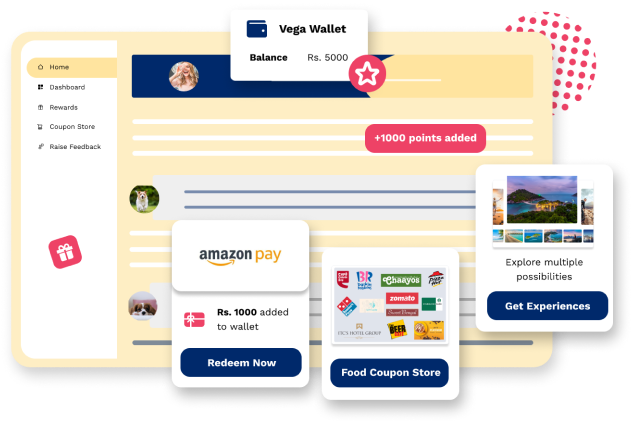Our brains need recognition
Neurons in the different parts of the brain connect and react to dopamine, which is essentially one of the “happy” hormones i.e. dopamine, oxytocin, and serotonin. Dopamine which is produced in the VTA (ventral tegmental area) travels to the limbic system including the hippocampus, the brain's learning, and memory center, and the hypothalamus, stimulating them
Stimulation with Rewards & Recognition
- Recognition for good work releases Dopamine to create a sense of pride and pleasure
- Stimulation of the hypothalamus with dopamine increases the plasticity of brain improving productivity
- Brain gets positive reinforcement leaving the person craving for more
- It creates the feeling of satisfaction and enjoyment
Employees who received recognition are
33%
More proactively innovating
65%
Less likely to job hunt
90%
Likely to work harder
Other theories of Rewards and Recognition
Though ultimately, it is about the brain to stimulate dopamine and create the sense of fulfillment for tasks and help with engagement, retention, and status, there are other theories that talk about the importance of social recognition, especially in the workplace.
Right from Ivan Pavlov ( does the name ring a bell?), who studied the effect of conditional reflexes on dogs with food and bells, there have been many scientific studies that talk about rewards and recognition. Let's see a few of them.
Maslow's hierarchy of needs (1943)
Maslow's hierarchy breaks down the components of human needs for motivation and thriving. At its core, you can distinguish the levels of compensation both monetary and non-monetary to know what the employee needs.
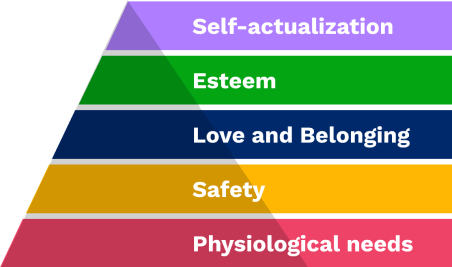
- Physiological needs ~ basic income
- Safety needs ~ financial and job security
- Love and Belonging ~ Trust
- Esteem Needs ~ Respect & Recognition
- Self-actualization ~ Above & beyond
Though we can talk about how employers can think about all the hierarchies to achieve maximum productivity, all of the needs boil down to Trust (i.e. love and belongingness) and Respect (Esteem) which can be achieved through Rewards, recognition, feedback, and gratitude.
McClelland's Theory of Needs (1961)
McClelland's theory or the Three needs theory explains the motivation drivers of people in three types. It also says that people exhibit characteristics based on their dominant motivating driver, which in return would largely be dependent on our culture and life experiences.
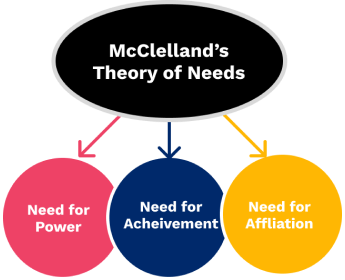
- Need for Achievement: Likes regular feedback & challenging goals
- Need for Power: Enjoys recognition and status
- Need for Affiliation: Belongingness and collaboration more than competition
With this theory, it is important to identify the drivers of employees and create the environment accordingly with challenging projects, team projects, or career orientation, making this more suitable at a team level.
Herzberg's Two-factor theory (1968)
Employee Engagement is an umbrella term that talks about the mental and emotional connectedness an employee feels towards their team, work, and organization. Most engaged employees are brand advocates and intend to stay long-term.
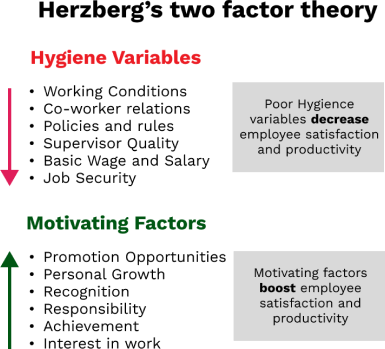
Combinations include:
- High Hygiene + High Motivation: Ideal
- High Hygiene + Low Motivation: Low motivation - job as a paycheck.
- Low Hygiene + High Motivation: motivated - but complains
- Low Hygiene + Low Motivation: Worst condition
Feelings, attitudes, and motivation form an important theme of “Maslow'' whereas Herzberg’s theory deals with higher levels of psychological needs (Maslow's) and breaks them down into hygiene variables and motivating factors.
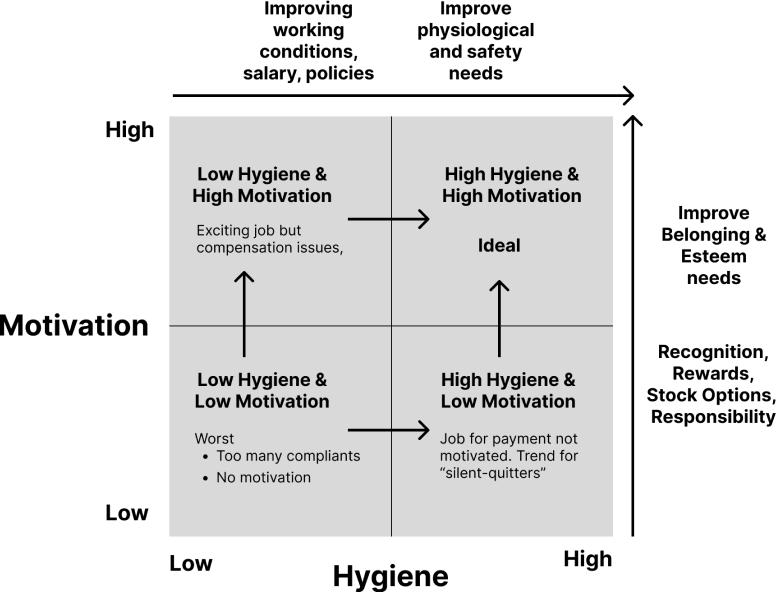
Short vs Long-term Rewards
Now that we know the multiple theories of motivation, let's come back to where it all started - the brain. We know that dopamine release is what makes employees more motivated and “hooked”, but there's more to it. The brain has two components namely: the emotional brain and the logical brain (wouldn't get into the actual components like the amygdala, prefrontal cortex, etc.) or for the fans of the Chimp Paradox: Chimp and Human parts of the brain.
Our emotional brain has a hard time imagining the future and focuses on the short-term, even though our logical brain clearly sees the future consequences of our current actions. Also, we can only see the level of dopamine release, when the chimp or the emotional brain is “off-guard” and trusts the other party.

This leads to one question: How often should you recognize employees? Such that your emotional brain can have that trust!
According to research by Gallup, employees need to be recognized verbally at least once a week and there is no such thing as over-recognition as long as it is deserved. At the end of the day, credit, where credit is due, should be remembered and people should be praised for the work they are doing well. Only then would they repeat the work well done.
But again, the short-term rewards also have one shortcoming, that has a short latency, that’s why more recognition and praise are needed to keep the employees going. But is it the solution? Probably not.
Enter long-term rewards.
Though short-term rewards and recognition are helpful for the brain to create trust, the logical brain needs more than that. Here is where ESOPs or stock options can form an important part! Showing the long-term gains with proper grants, vesting, and exercise periods can help calm your logical brain and create the feeling of “self-actualization” of Maslow's cycle through the grant of ownership and motivate people with the Need for “Achievement” and “Power” by granting status and recognition.
Finding the right balance
Instead of thinking about short-term vs long-term rewards, make it short-term and long-term rewards for your employees to truly gain the potential that they can provide. The “dopamine” with social recognition and rewards combined with ESOPs provide the most effective balance for the emotional and logical parts of your brain, which would result in
Increased Retention
Increased Productivity
Creation of brand advocators
This is where Vega HR plays the perfect role to bring balance to your organization, where we help you bring in the “CARE” that is needed.
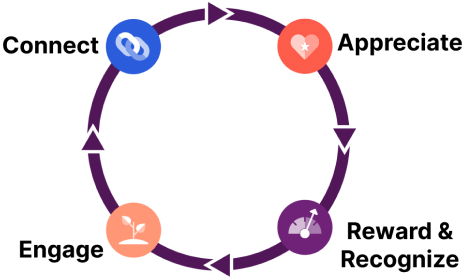
- C: Connect
- A: Appreciate
- R: Reward & Recognize
- E: Engage
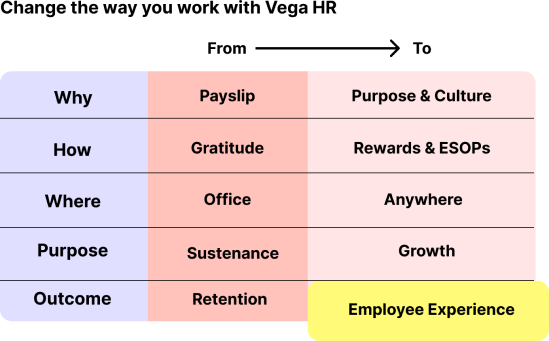
Is your company achieving its potential?
Employees today have evolved beyond their psychological needs and are looking for something that contributes to their sense of fulfillment. The problem? Many companies aren’t providing them with what they need to thrive. Now, focus on the best asset you have to unlock a “thriving” workplace
Introducing Vega HR
- Vega HR is one of the finest employee experience platform that brings your entire organization together
- With Vega HR, your people feel more connected to each other, collaborate more effectively and better understand your company's mission and values
- At Vega HR, we've built an employee application apt for the future of work, designed to be your internal communications tool, organization intranet, and social network all in one, with an amazing digital experience.
- Vega HR platform helps remote and in-office employees who are more engaged, motivated to succeed, and likely to stay at your organization for longer
Create a culture people cherish
- Send rewards
- Give shoutouts
- Build a community
- Gift experiences
